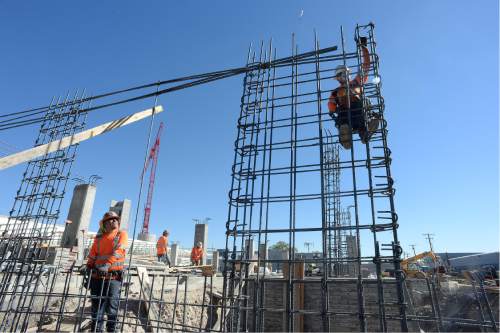This is an archived article that was published on sltrib.com in 2016, and information in the article may be outdated. It is provided only for personal research purposes and may not be reprinted.
As much attention as the problem of homelessness in Salt Lake City has earned for itself over the past year or so, the sad fact is that the men, women and children we see on the street are just the tip of a very large iceberg.
The much larger portion of the problem, lying just below the surface, is a severe shortage of affordable housing for low-income and working-class families. Even those who avoid being tossed out onto the street are finding their quality of life disrupted by the lack of decent housing at affordable prices.
City, county and private sector leaders, aided by some state money, are floating ideas on what to do to ease the homeless problem. But the dearth of affordable housing, which intensifies the homeless problem even as it is partly obscured by it, will require even more commitment from higher levels of government.
Research shows that fully half of renters in Salt Lake City are parting with at least 30 percent of their monthly incomes just to keep a roof over their heads. A quarter of them are what housing experts call "severely burdened," meaning that landlords collect at least half of their income.
In a way, this is a good problem to have. Rents that go up, and stay up even as more units are built, are a result of a booming economy that draws more residents with good jobs and expensive tastes.
But for everyone else, the destabilizing effect is large and ripples through the community. Families find it hard to make ends meet, shorting themselves and their children on groceries, medicine and other basics.
Families may be forced to move often. Thus do neighborhoods lack residents with roots in the community. And children frequently change schools, disrupting their education.
In early 2015, then-Mayor Ralph Becker launched his 5,000 Doors initiative. But his incentives, such as tax breaks and exemptions from fees, have spurred little in the way of affordable housing.
In the free market, need does not equal demand. Need plus money equals demand and, in the current booming atmosphere found hereabouts, the demand is for higher-end living spaces.
Some cities have tried laws that require developers to set aside a certain number of units for affordable housing, or pay into a fund to support such projects. But those laws are controversial and often opposed on the grounds that they scare away builders altogether.
Putting public money toward affordable developments in any significant way would likely be beyond the means of even the largest cities. Though the Denver City Council is considering such a plan.
Clearly, the need for affordable housing is not being met by the private market alone. If this is to remain a livable community for all, developers must be pushed or pulled into providing a wider range of housing choices.



